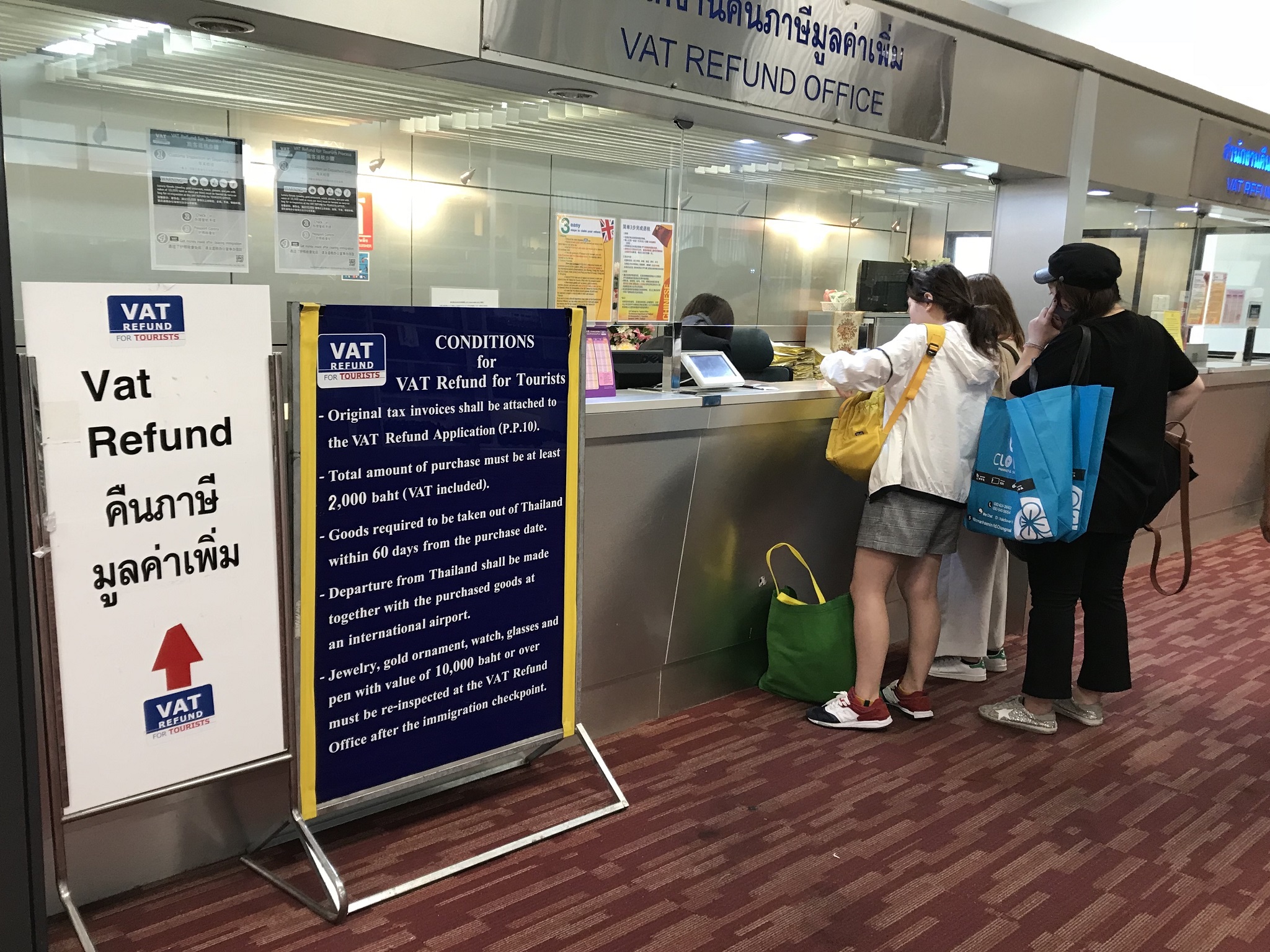Thailand’s Revenue Department has improved VAT refunds for visitors in order to shorten the time they spend waiting in line to submit their claims to customs officers. The revised criteria to fast track VAT refunds will go into effect on December 1, 2024.
Julapun Amornvivat, Deputy Finance Minister, has instructed the Revenue Department to strengthen the criteria and other procedures for VAT refunds for foreign tourists.
During a meeting on November 21, Prime Minister and Finance Minister Srettha Thavisin directed the Finance Ministry to collaborate with relevant agencies to make VAT refunds for foreign visitors leaving the country more convenient and timely.
Mr Julapun stated on Thursday that he had met with the Revenue Department and the Customs Department to discuss how to enhance regulations on VAT refunds for foreign tourists and how to shorten waiting lines for inspection of products at airports. He claimed that many tourists were observed lined up to have their products scrutinized for tax refunds.
According to Kulaya Tantitemit, director-general of the Comptroller General’s Department, associated criteria and conditions for VAT refunds were updated on November 27 to be more appropriate for the current situation.
The new criteria will go into effect on December 1, according to Ms Kulaya, the Revenue Department’s acting director-general.
According to her, the new criteria will raise the value of products that do not need to go through customs processes.
Details for VAT Refunds are as follows:
- The value of goods that must be shown to customs officers has increased from 5,000 baht to 20,000 baht. This will reduce the number of tourists who must show their goods from 1.7 million people a year (or 67% of tourists who applied for VAT refunds) to about 500,000 (or about 20% of tourists who applied for VAT refunds.
- The value of nine products (jewellery, gold ornaments, watches, eyeglasses, pens, smartphones, laptops or tablets and handbags) to be shown to revenue officials is increased from 10,000 baht to 40,000 baht per item. The value of carry-on goods has increased from 50,000 baht to 100,000 baht per item.
The new VAT refunds criteria will help lower the number of tourists who must display their items to officials from 120,000 to 30,000 each year, or from 333 to 84 every day.
Tourists who buy things worth less than 20,000 baht can receive vat refunds for tourists from the Revenue Department without having to go through customs.
What exactly is VAT in Thailand?
Since 1992, Thailand has imposed a value-added tax (VAT), which is an indirect tax on the value-added at each step of production and distribution.
In Thailand, who is subject to VAT?
VAT applies to every person or entity that regularly delivers goods or offers services in Thailand and has an annual turnover of more than THB 1.8 million.
Service is considered supplied in Thailand if it is conducted in Thailand regardless of where it is used, or if it is performed elsewhere and used in Thailand.
In Thailand, importers are also liable to VAT, which is collected by the Customs Department at the moment items are imported. Certain firms are exempt from VAT and must instead pay Specific Business Tax (SBT).
The current rate for VAT in Thailand is 7%.
The VAT rate of 0% applies to the following activities:
- Export of goods
- Services rendered in Thailand and consumed outside Thailand in accordance with the rules, procedures and conditions prescribed by the Director-General
- International transport services by aircraft or sea-going vessels
- Sales of goods and services to Thai government ministries, departments or state enterprises under foreign loan assistance programs
- Sales of goods and services to international organisations that Thailand is obliged under agreements with organisations to treat like embassies
- Sales of goods and services to foreign economic and trade offices that are established in Thailand under agreements with foreign governments
- Sales of goods or services between bonded warehouses and businesses located in export processing zones or duty-free zones
In Thailand, how is VAT calculated?
VAT liability = output tax – input tax is the formula for calculating VAT liability.
In Thailand, the VAT system works as follows: if company A (which is subject to VAT) acquires fabrics from company B (which is also subject to VAT), company A will earn VAT credits while company B will have VAT debits. If firm A – let’s say it manufactures clothes – then sells them to a distributor, it will have VAT debits. VAT debits will be offset against VAT credits at the end of the month. If the company still has credits, it can obtain a VAT refund (albeit this is a time-consuming process). If it still has debits, this money must be paid efficiently.
VAT returns (PP 30) in Thailand must be filed with the Area Revenue Branch Office on a monthly basis by the 15th of the following month. Please keep in mind that if the goods or services are also subject to excise tax, the VAT return must be filed with the Excise Department alongside the excise tax filings. Even if the refund is null for that month, the monthly VAT returns are required. The VAT payment becomes due at the same time.






